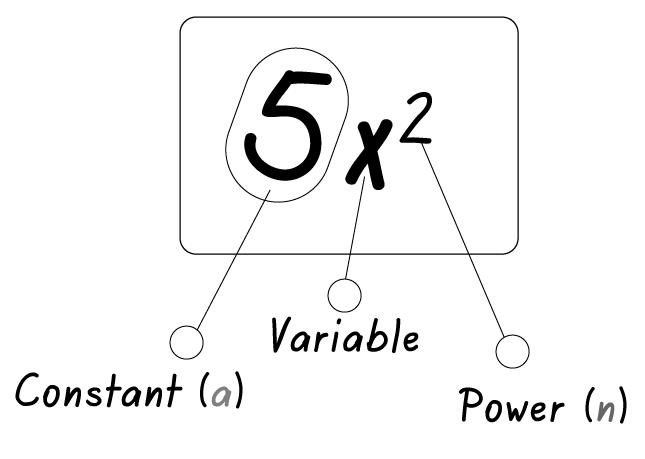Differentiate 3In5x With Steps
Answer

Differentiation of a 3 \ln u
To differentiate the expression 3 ln(5x) with respect to x, we will use the chain rule of differentiation. The chain rule states that for a function composed of two functions, f(g(x)), the derivative is the derivative of the outer function evaluated at the inner function, multiplied by the derivative of the inner function.
Let us differentiate the given expression step by step:
1. Given expression:
3 \ln(5x)
2. Apply the chain rule:
Let u = 5x,
\frac{d}{dx} (3 \ln u) = 3 \cdot \frac{d}{du} (\ln u) \cdot \frac{du}{dx}
3. Find the derivative of ln(u) with respect to u:
\frac{d}{du} (\ln u) = \frac{1}{u}
4. Find the derivative of u with respect to x:
\frac{du}{dx} = \frac{d(5x)}{dx} = 5
5. Substituting the derivatives back into the chain rule formula:
\frac{d}{dx} (3 \ln u) = 3 \cdot \frac{1}{u} \cdot 5
6. Substitute back u = 5x :
= 3 \cdot \frac{1}{5x} \cdot 5 = \frac{3}{x}
Therefore, the derivative of 3 ln(5x) with respect to x is \frac{3}{x} .
You can also differentiate coefficient of x in the following form
Common functions
7
6x
x^{1/2}
2x^2
Exponential functions
-e^{-\frac{12}{7x}}
-3e^{2x}
Trigonometric functions
4 \sin (x)
-\cos(3x)
Logarithmic functions
4In9x
1. Find the derivative of the function -2x^{-\frac{1}{2}}.
Solution:
To find the derivative of a function in the form f(x) = ax^n, where a and n are constants, we use the power rule. The derivative is given by:
f'(x) = n \cdot a \cdot x^{n-1}.
Applying this rule to the given function, we have:
f'(x) = -\frac{1}{2} \cdot -2 \cdot x^{-\frac{1}{2}-1}</p><p>= x^{-\frac{3}{2}}.
Therefore, the derivative of -2x^{-\frac{1}{2}} is
x^{-\frac{3}{2}}.
2. Determine the derivative of e^{x}.
Solution:
The derivative of e^{x} is itself, as the derivative of
e^{x} is e^{x}.
This is a unique property of the exponential function e^{x}.
Therefore, the derivative of e^{x} is
e^{x}.
3. Calculate the derivative of 4\cos(9x).
Solution:
By applying the chain rule and derivative of cosine function, we have:
f'(x) = -4 \cdot 9 \sin(9x) = -36 \sin(9x).
Therefore, the derivative of 4\cos(9x) is
-36 \sin(9x).
4. Find the derivative of -3e^{\frac{8}{5}x}.
Solution:
Similarly to the derivative of e^{x}, the derivative of e^{\frac{8}{5}x} is itself times the constant \frac{8}{5}:
f'(x) = -3 \cdot \frac{8}{5} e^{\frac{8}{5}x} = -\frac{24}{5} e^{\frac{8}{5}x}.
Therefore, the derivative of -3e^{\frac{8}{5}x} is
-\frac{24}{5} e^{\frac{8}{5}x}.
5. Differentiate the function 4\sin(2x).
Solution:
Using the chain rule and derivative of the sine function, we get:
f'(x) = 4 \cdot 2 \cos(2x)= 8 \cos(2x).
Therefore, the derivative of 4\sin(2x) is
8\cos(2x).
1. \frac{d}{dx}\left(-2x^{-\frac{1}{2}}\right) = x^{-\frac{3}{2}}
2. \frac{d}{dx}\left(-e^x\right) = -e^x
3. \frac{d}{dx}\left(4\cos(9x)\right) = -36\sin(9x)
4. \frac{d}{dx}\left(-3e^{\frac{8}{5}x}\right) = -\frac{24}{5}e^{\frac{8}{5}x}
5. \frac{d}{dx}\left(5\ln x\right) = \frac{5}{x}
6. \frac{d}{dx}\left(2x^3\right) = 6x^2
7. \frac{d}{dx}\left(9e^{-2x}\right) = -18e^{-2x}
8. \frac{d}{dx}\left(7\sin(2x)\right) = 14\cos(2x)
9. \frac{d}{dx}\left(-4e^{5x}\right) = -20e^{5x}
10. \frac{d}{dx}\left(3\ln(4x)\right) = \frac{3}{x}
11. \frac{d}{dx}\left(-5\cos(3x)\right) = 15\sin(3x)
12. \frac{d}{dx}\left(6e^{-4x}\right) = -24e^{-4x}
13. \frac{d}{dx}\left(2\sin(5x)\right) = 10\cos(5x)
14. \frac{d}{dx}\left(8e^{2x}\right) = 16e^{2x}
15. \frac{d}{dx}\left(4\ln(3x)\right) = \frac{4}{x}
Sample Expressions
For best result write
1 as 1
-1 as -1
x as x
-x as -x
x^{1/2} as x^(1/2)
x^{-1/2} as x^-(1/2)
-x^{1/2} as - x^(1/2)
-x^{-1/2} as - x^-(1/2)
-2x as -2x
2x^2 as 2x^2
-2x^2 as -2x^2
2x^{1/2} as 2x^(1/2)
2x^{-1/2} as 2x^-(1/2)
-2x^{1/2} as -2x^(1/2)
-2x^{-1/2} as -2x^-(1/2)
2x^{-1} as 2x^-1
-2x^{-1} as -2x^-1
-x^{-1} as -x^-1
x^{-1} as x^-1
x^2 as x^2
-x^2 -x^2
-x^{-2} -x^-2
2x as 2x
e^x as e^x
-e^x as -e^x
-e^{-x} as -e^-x
e^{2x} as e^(2x)
e^{-2x} as e^-(2x)
-e^{2x} as -e^-(2x)
-e^{-2x} as e^-(2x)
e^{8/5x} as e^(8/5x)
e^{-8/5x} as e^-(8/5x)
-e^{8/5x} as -e^-(8/5x)
-e^{-8/5x} as -e^-(8/5x)
3e^x as 3e^x
3e^{-x} as 3e^-x
-3e^x as -3e^x
-3e^{-x} as -3e^-x
3e^{2x} as 3e^(2x)
3e^{-2x} as 3e^-(2x)
-3e^{2x} as -3e^(2x)
-3e^{-2x} as -3e^(-2x)
3e^{8/5x} as 3e^(8/5x)
3e^{-8/5x} as 3e^(-8/5x)
-3e^{8/5x} as -3e^(8/5x)
-3e^{-8/5x} as -3e^(-8/5x)
-\cos(x) as -cos(x)
4\sin(x) as 4 sin(x)
-\tan(3x) - tan(3x)
